 The WHO team checks the spraying equipment before heading to Sohbatpur to conduct the indoor residual spraying campaign. Photo credit: WHO Pakistan/Saiynabashir
The WHO team checks the spraying equipment before heading to Sohbatpur to conduct the indoor residual spraying campaign. Photo credit: WHO Pakistan/Saiynabashir
25 April 2024 – Pakistan carries a significant burden of major vector-borne diseases. Malaria is endemic in the country and contributes to high levels of morbidity and mortality. Dengue is also a prominent health concern.
In 2022, monsoon floods – the worst in the country’s history – affected all 60 districts in Pakistan that are highly endemic for malaria.
During the monsoon floods, there was a visible rise in malaria cases from July 2022 in many districts in Sindh, Khyber Pakhtunkhwa and Balochistan. By early August 2022, cases had reached outbreak proportions.
In September 2022, WHO set up daily and weekly reporting systems for selected communicable diseases, such as malaria, dengue and cholera. These have since helped in the early detection of outbreaks and, later, in assessing the impact of interventions.
In 2022, Pakistan reported 1.8 million malaria cases. This figure rose to 2 million cases in 2023. Operations led by WHO, and involving community members, succeeded in effectively controlling the outbreak and normalizing the situation by end 2023.
This malaria outbreak, affecting over 40 districts in total, is considered the worst in Pakistan since the resurgent outbreak of 1973. Population displacement caused by the floods added significantly to the disease burden.
Collectively, Pakistan, Afghanistan, Somalia, Sudan and Yemen account for more than 90% of the total malaria burden in the WHO Eastern Mediterranean Region.
Indoor residual spraying campaign led by WHO
 Indoor residual spraying activies are carried out by the WHO team at a village in Sohbatpur district. Photo credit: WHO Pakistan/Saiynabashir
Indoor residual spraying activies are carried out by the WHO team at a village in Sohbatpur district. Photo credit: WHO Pakistan/Saiynabashir
Experts from the WHO Regional Office for the Eastern Mediterranean and WHO’s global malaria programme ran rapid situation analysis exercises and assessments early in the outbreak. They then developed an emergency response plan to control the situation and reduce mortality.
Sohbatpur, a district in Balochistan, has a population of more than 200 000. It was among the first districts to be hit by the heavy monsoon rains and floods of 2022. Hundreds of square kilometres of Sohbatpur district were submerged in floodwater, giving mosquitoes favourable conditions in which to multiply, driving the district’s worst malaria outbreak in recent history.
As the floodwater receded, WHO began an indoor residual spraying (IRS) campaign in this and other badly affected districts of Balochistan and Sindh provinces. This aimed to reduce the transmission potential of the worst affected union councils.
WHO led the house-to-house spraying campaign in Sohbatpur with the support of Balochistan Health Department and national Common Management Unit of the national health ministry. Five teams of community health workers were formed, each consisting of a supervisor, a dilator (who is responsible for mixing the chemicals in the tank) and 5 sprayers. Those involved were community members linked to provincial and district health departments.
Malaria experts from WHO and Balochistan’s government monitored the campaign’s progress. This WHO-led IRS campaign was the only one of its kind in the flood-affected areas of Balochistan that reduced the risk of malaria-related deaths. It did so by reducing the mosquito population, interrupting disease transmission, to protect the most vulnerable people displaced from their homes or surrounded by water in and around their dwellings.
The IRS campaign team’s overall impression of the activity was positive, and its members thanked WHO for the life-saving initiative. One team member expressed their dedication to community well-being by putting in significant efforts to ensure the campaign’s success. Another team member remarked on how, during this challenging time, the team’s commitment went beyond the call of duty, to ensure protection from infection for all children in affected areas.
The efforts of these community members and the involvement of mosque imams, teachers and students resulted in active community participation in the campaign – in the areas of IRS, larviciding and mass drug administration. Community participation reduces the cost of implementation and improves the coverage and quality of interventions.
Other major response efforts
For the first time in Pakistan, WHO also introduced the innovative approach of mass drug administration. This was done in areas where the incidence of falciparum and test positivity rates had reached 50%.
Other major elements of the response included mobilizing lady health workers – as well as immunization and polio programme and WHO field workforce – to run interventions, conduct surveillance and provide care on the ground. Outreach services were set up in all outbreak-hit districts of Balochistan and Sindh provinces to provide and ensure continuity of quality diagnostic and treatment services.
Using these interventions, alone or in combination, brought a rapid decline in daily reported cases, as the transmission potential reduced. An estimated 40 000 deaths across all 60 outbreak-hit districts were averted including Sohbatpur. This was achieved thanks to the provision of early diagnosis and effective treatment at the doorstep of those surrounded by floodwater or displaced to temporary shelters in camps.
The operations led by WHO represent the largest effort in the history of malaria outbreak control in Pakistan since 2001.
 The WHO team checks the spraying equipment before heading to Sohbatpur to conduct the indoor residual spraying campaign. Photo credit: WHO Pakistan/Saiynabashir
The WHO team checks the spraying equipment before heading to Sohbatpur to conduct the indoor residual spraying campaign. Photo credit: WHO Pakistan/Saiynabashir
25 April 2024 – Pakistan carries a significant burden of major vector-borne diseases. Malaria is endemic in the country and contributes to high levels of morbidity and mortality. Dengue is also a prominent health concern.
In 2022, monsoon floods – the worst in the country’s history – affected all 60 districts in Pakistan that are highly endemic for malaria.
During the monsoon floods, there was a visible rise in malaria cases from July 2022 in many districts in Sindh, Khyber Pakhtunkhwa and Balochistan. By early August 2022, cases had reached outbreak proportions.
In September 2022, WHO set up daily and weekly reporting systems for selected communicable diseases, such as malaria, dengue and cholera. These have since helped in the early detection of outbreaks and, later, in assessing the impact of interventions.
In 2022, Pakistan reported 1.8 million malaria cases. This figure rose to 2 million cases in 2023. Operations led by WHO, and involving community members, succeeded in effectively controlling the outbreak and normalizing the situation by end 2023.
This malaria outbreak, affecting over 40 districts in total, is considered the worst in Pakistan since the resurgent outbreak of 1973. Population displacement caused by the floods added significantly to the disease burden.
Collectively, Pakistan, Afghanistan, Somalia, Sudan and Yemen account for more than 90% of the total malaria burden in the WHO Eastern Mediterranean Region.
Indoor residual spraying campaign led by WHO
 Indoor residual spraying activies are carried out by the WHO team at a village in Sohbatpur district. Photo credit: WHO Pakistan/Saiynabashir
Indoor residual spraying activies are carried out by the WHO team at a village in Sohbatpur district. Photo credit: WHO Pakistan/Saiynabashir
Experts from the WHO Regional Office for the Eastern Mediterranean and WHO’s global malaria programme ran rapid situation analysis exercises and assessments early in the outbreak. They then developed an emergency response plan to control the situation and reduce mortality.
Sohbatpur, a district in Balochistan, has a population of more than 200 000. It was among the first districts to be hit by the heavy monsoon rains and floods of 2022. Hundreds of square kilometres of Sohbatpur district were submerged in floodwater, giving mosquitoes favourable conditions in which to multiply, driving the district’s worst malaria outbreak in recent history.
As the floodwater receded, WHO began an indoor residual spraying (IRS) campaign in this and other badly affected districts of Balochistan and Sindh provinces. This aimed to reduce the transmission potential of the worst affected union councils.
WHO led the house-to-house spraying campaign in Sohbatpur with the support of Balochistan Health Department and national Common Management Unit of the national health ministry. Five teams of community health workers were formed, each consisting of a supervisor, a dilator (who is responsible for mixing the chemicals in the tank) and 5 sprayers. Those involved were community members linked to provincial and district health departments.
Malaria experts from WHO and Balochistan’s government monitored the campaign’s progress. This WHO-led IRS campaign was the only one of its kind in the flood-affected areas of Balochistan that reduced the risk of malaria-related deaths. It did so by reducing the mosquito population, interrupting disease transmission, to protect the most vulnerable people displaced from their homes or surrounded by water in and around their dwellings.
The IRS campaign team’s overall impression of the activity was positive, and its members thanked WHO for the life-saving initiative. One team member expressed their dedication to community well-being by putting in significant efforts to ensure the campaign’s success. Another team member remarked on how, during this challenging time, the team’s commitment went beyond the call of duty, to ensure protection from infection for all children in affected areas.
The efforts of these community members and the involvement of mosque imams, teachers and students resulted in active community participation in the campaign – in the areas of IRS, larviciding and mass drug administration. Community participation reduces the cost of implementation and improves the coverage and quality of interventions.
Other major response efforts
For the first time in Pakistan, WHO also introduced the innovative approach of mass drug administration. This was done in areas where the incidence of falciparum and test positivity rates had reached 50%.
Other major elements of the response included mobilizing lady health workers – as well as immunization and polio programme and WHO field workforce – to run interventions, conduct surveillance and provide care on the ground. Outreach services were set up in all outbreak-hit districts of Balochistan and Sindh provinces to provide and ensure continuity of quality diagnostic and treatment services.
Using these interventions, alone or in combination, brought a rapid decline in daily reported cases, as the transmission potential reduced. An estimated 40 000 deaths across all 60 outbreak-hit districts were averted including Sohbatpur. This was achieved thanks to the provision of early diagnosis and effective treatment at the doorstep of those surrounded by floodwater or displaced to temporary shelters in camps.
The operations led by WHO represent the largest effort in the history of malaria outbreak control in Pakistan since 2001.
 The WHO team checks the spraying equipment before heading to Sohbatpur to conduct the indoor residual spraying campaign. Photo credit: WHO Pakistan/Saiynabashir
The WHO team checks the spraying equipment before heading to Sohbatpur to conduct the indoor residual spraying campaign. Photo credit: WHO Pakistan/Saiynabashir Indoor residual spraying activies are carried out by the WHO team at a village in Sohbatpur district. Photo credit: WHO Pakistan/Saiynabashir
Indoor residual spraying activies are carried out by the WHO team at a village in Sohbatpur district. Photo credit: WHO Pakistan/Saiynabashir







